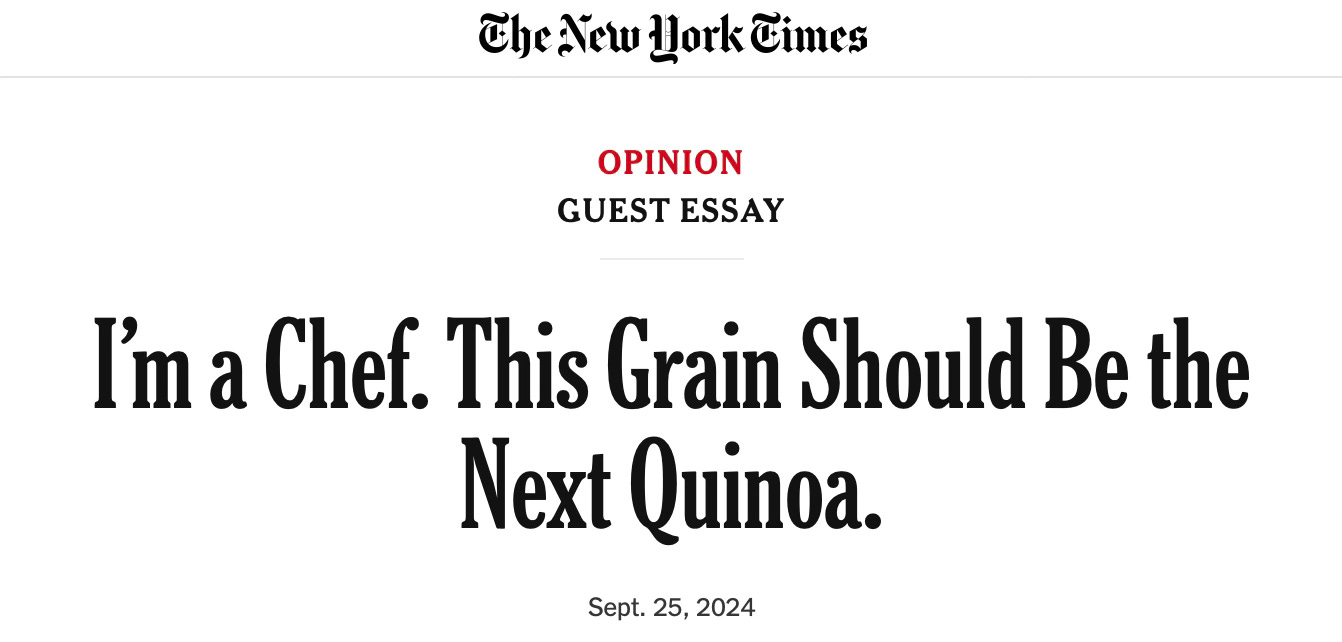A billion dollars
I remember when Siete was called Must B Nutty and I thought, almond flour tortillas, right on! That was at Expo circa 2015. Yesterday, they sold to PepsiCo for $1.2 billion.
Someone is going to write a comprehensive guide on how to sell your brand for a billion dollars and I’m here for it. Until then, my hot take is:
BigFood is good at everything except new product repeat, and that’s what they’ll pay for
Repeat via loyalty is what BigFood is buying when they buy brands. BigFood can make new products, sell them, and get consumers to try them — once. But they lack the je ne sais quoi that gets repeat — namely, loyalty.
Loyalty is the value BigFood pays for — the strong emotional connection built on trust and satisfaction that keeps consumers coming back.
Regenerative done different? Hm.
I’ve written about regenerative agriculture a lot and my position remains that farmers need brand partners to succeed — companies willing to invest, share risk, and create demand for regenerative products.
But a couple of weeks ago, a large consumer study by Purdue showed that most people just don’t want to pay extra for regenerative agriculture, making it hard to create widespread demand for regenerative products.
CPG agency Smoketown gets at the role of consumer demand in a white paper, Unlocking Demand for Regenerative Agriculture, from interviews with brands and manufacturers working in the regenerative space.
TL;DR
Consumer Demand Is Inevitable: Some believe consumer demand for regenerative products will grow, much like it did with organic.
Regenerative Won't Succeed Without Regulation: This theory suggests that only through governmental policies and regulation will regenerative practices become mainstream.
We Can’t Wait for Consumers: Many brands think they must act now, whether or not consumers are fully on board.
Brand Leadership is Key: Some argue that regenerative practices will grow only through the leadership and commitment of strong, mission-driven brands.
What about funding
Terra Regenerative Capital is a new fund tackling the “messy middle” — aggregators, co-manufacturers, and marketplaces — as the key to scaling regenerative agriculture. But even with this focus, a $50 million fund goal (raised 20% to date)—is a tiny drop in the bucket. It’s clear we are at very fuzzy beginnings.
So, back to the question: who will pay? Even with new funds and innovative thinking, regenerative still requires a return on investment. Smoketown did an excellent job of synthesizing the consumer-led problem, drawing a useful analogy to the early days of the organic movement. And even now, organic makes up only a small portion of the food market.
And then there’s oversight, measurement, and reporting. Regenerative agriculture is an even more complex system than organic, as I wrote recently in What Does the History of Organic Fraud Say About the Future of Regenerative? it’s a new classification of food, and with that comes a labyrinth of oversight challenges.
But I’m encouraged by the environmental advancements we’re seeing in farming. This includes higher yields with less extraction and fewer inputs. According to recent surveys, if regenerative agriculture is going to work, it needs to pay dividends on both yields and livelihoods. Premium brands, those that can command high prices are going to lead the way, and that’s not any different than the organic movement.
Quick Hits:
Don’t say “Sell By” say “Use By”, okay? Yahoo News
Food traceability rule compliance date is near and execs are still confused Food Dive
This clears things up:
The Boar’s Head plant was not complying with food safety for many years and now 10 people are dead Food Safety News
African grains championed on this newsletter, teff and fonio, made the NYT! New York Times
All my best,
Jennifer







